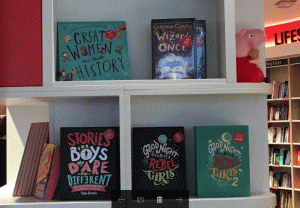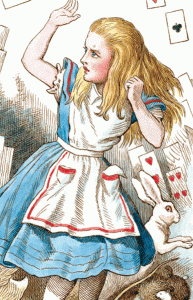 have just been published. Welcome to the market of the books for boys’ and books for girls’. Ben Brooks, a young author, who riding the wave of media and public interest in gender issues in our postWeinstein reality, decided that there have been enough recent titles for girls – Good night stories for rebel girls, Good night stories for rebel girls 2, HerStory, Girls who changed the world, Girls who rocked the world, Fantastically great women who changed the world, Fantastically great women who made history, Women in science and what not – boys, “the ones who dare to be different”, also need some. Boys have been suffering from a lack of reading for too long. Or have they?
have just been published. Welcome to the market of the books for boys’ and books for girls’. Ben Brooks, a young author, who riding the wave of media and public interest in gender issues in our postWeinstein reality, decided that there have been enough recent titles for girls – Good night stories for rebel girls, Good night stories for rebel girls 2, HerStory, Girls who changed the world, Girls who rocked the world, Fantastically great women who changed the world, Fantastically great women who made history, Women in science and what not – boys, “the ones who dare to be different”, also need some. Boys have been suffering from a lack of reading for too long. Or have they?
Last month, when the Guardian published the article “Good Night Stories for Rebel … Boys? Male versions of bestseller arrive on shelves” GLARE commented on Twitter “Nice to have alternative boy role models – but in doubt about this line between boys vs girls being stressed once again…”. One of the follow-up comments to our post nicely summed up the issue: “Wasn’t the whole idea that there were already plenty of boy ones? And that the girl ones were filling a gap?!” A couple days later the Guardian published an opinion piece by Tricia Lowther, one of the founders of the Let Books Be Books campaign,“Why no stories for rebel children?”, where she explains why we should not be labelling books by gender. Yes, girls need more books about “great women” like Ada Lovelace and so do boys need a greater variety of role models. But, gender labelling books actually only reinforces the stereotypes, builds up walls between girls and boys – and I could not agree more.
Why do we have books for boys and books for girls?
Bowing to consumer pressure, major retailers have reluctantly been shifting their marketing strategies away from the once omnipresent ‘blue for boys’ and ‘pink for girls’ stereotype. So the situation on the book market deserves attention. As Lowther says: “While the content of the books – stories of groundbreaking women, or men unafraid to express emotion – is welcome”, this market segregation could actually be reinforcing the problem. The line dividing ‘Us’ from ‘Them’, girls from boys, seems irresistible. But with books, it was only in the latter half of the 19th century that booksellers started to distinguish between reading suitable for boys or for girls. At the beginning of the 19th century, the book market did not even clearly delineate between adult and child readers. The distinction between books for boys and girls was based on the roles children were expected to play in the society once they grew up in. And these roles were certainly very, very different in the 19th century. But haven’t we moved on?
How different the world of boys and girls was, can be illustrated by two extremely popular 19th century periodicals published by the Religious Tract Society: Boy’s Own Paper and Girl’s Own Paper. Boy’s Own Paper was started to provide boys a suitable reading alternative and to illustrate “by practical example the noblest type of manhood and the truest Christian devotion” (Altick 1957: 362). The paper was aimed at juvenile readers, as Skelding (2001: 39) points out: “… the Boy’s Own Paper, had a clearly defined, school-going audience … and had fiction and features of a predominantly juvenile nature … characterised by adventurous themes or school stories”.
On the other hand, the purpose of the Girl’s Own Paper was entirely different. Already the title itself was quite deceptive: the content clearly shows that it was actually targeting not only small girls but also much older female audience (Skelding 2001: 40). This fundamental difference between these two papers illustrates well the Victorian understanding of gender: “Boy’s Own Paper exhibits a clear sense of boyhood as a definite period distinct from the nursery and from manhood” but “there is no accompanying rationale for girls, who seem to have been expected to move from infancy to adulthood with virtually no transitional period” (Skelding 2001: 39-40). One of the reasons why the Girl’s Own Paper was established was to give girls (small and older) their own appropriate reading and steer them away from reading their brothers’ adventure stories and getting wrong ideas about the world around them.
Pink vs blue
 The visual representation of this divided world, i.e. the pink vs blue theme, is in fact quite a recent phenomenon. One of the most famous female child characters is certainly Lewis Carroll’s Alice. The colour of her iconic dress (Vaclavik 2019), illustrated by John Tenniel in an illustration approved by Lewis Carroll, was not pink but blue. Strictly speaking, in the very first printed colour drawing Alice appeared in a red dress (People’s edition in 1887); later it was yellow (Nursery edition in 1889); and she did not begin wearing the famous blue one until 1903 (The Little Folks’ Editions by Macmillan).
The visual representation of this divided world, i.e. the pink vs blue theme, is in fact quite a recent phenomenon. One of the most famous female child characters is certainly Lewis Carroll’s Alice. The colour of her iconic dress (Vaclavik 2019), illustrated by John Tenniel in an illustration approved by Lewis Carroll, was not pink but blue. Strictly speaking, in the very first printed colour drawing Alice appeared in a red dress (People’s edition in 1887); later it was yellow (Nursery edition in 1889); and she did not begin wearing the famous blue one until 1903 (The Little Folks’ Editions by Macmillan).
Some claim that the origin of this colour gendering can be traced back to Alcott’s Little Women (1868), where Amy ties “a pink bow and a blue bow on Meg’s twins Daisy and Demi, so people will know the difference between the girl and the boy” (Frassanito & Pettorini 2008). Colours have only gradually become gender specific. The major boom occurred in the 1940s, when the stereotype became established. Later, thanks to the feminist movement in the 1960s, there was strong resistance to such stereotyping, but it gradually returned in the 1980s partly due to the development of prenatal testing, which had its commercial applications. Parents could now buy their pink or blue baby layette even before the baby was born (Paoletti 2012). While there has been a lively debate extending well beyond academia on the origin of the ‘pink for girls’ and ‘blue for boys’ stereotype, the notion itself seems to be well established and accepted.
A search in the Google N-gram viewer for the phrases blue for boys and pink for girls clearly supports the historical developments. There are very few occurrences before 1900. In texts from the period 1800 to 1908 only dark-blue uniforms or other pieces of clothing for boys are mentioned. In the next period, 1909 to 1941, most of the texts refer to dark-blue uniforms as well, though in 1929 we also find the heading Blue for Boys, Pink for Girls in a short article in The Michigan Alumnus on student elections at the university where voting ballot boxes are distinguished by colour. In the texts from the period 1942 to 1944, which represents one of the frequency peaks in the figure, we already find texts associated with the colour stereotype. Sewing for the Baby (by K. Hardy published in 1944) claims that “the traditional baby colors of blue for boys and pink for girls are ignored today.” Another text of the same genre and published in the same year (Sewing for Everyone by M. Brooks Picken) says on the other hand that “light pink for trimming baby girls’ clothes and light blue for boys’ is, of course, a time-honoured custom.”
A quick search in ChiLit, the 19th Century Children’s Literature Corpus, confirms that pink certainly would not have been a distinctively girls’ colour. We find lots of pink cheeks and pink sugar, though. Pink does occur as a colour of clothing as well but seems to belong more to princesses and fairies, though we do find old pink ginghams as well.
She was dressed in bright pink, and laughed as she came forward, as if sure of herself and her attractions. And she was the Princess of the east. [The Tapestry Room, Mrs. Molesworth]
What princess had arms so dazzlinly white, or went delicately clothed in such pink and spangles? [Dream Days, Kenneth Grahame]
“He says, ‘Is this fairyland?'” she replied; and the other, who had a blue satin cloak answered, “Oh, does he?” and then they began to empty the panniers of many small blue, and pink, and scarlet shirts, and coats, and stockings; [Mopsa the Fairy, Jean Ingelow]
A century later, the picture has changed. A search for pink in the Oxford Children’s Corpus (OCC), which contains contemporary fiction for children, yields a huge amount of results and the relative frequency of occurrence of pink is actually about the double compared to ChiLit – we still have pink cheeks and pink tongues but we also have plenty of pink drink and many pink dresses and other items of clothing. Pink is also strongly associated with words like fluffy, silk and wearing. I was wondering about the frequency rise and whether the children’s fictional worlds have become more colourful. But no – the relative frequencies for yellow, green, blue and purple are roughly the same in the ChiLit and the OCC corpus. So it is our world, fictional and real, that has become definitely more pink.
REFERENCES
Altick, R. (1957). The English Common Reader. A social history of the mass reading public, 1800 – 1900. Columbus: Ohio State University Press.
Frassanito, P., & Pettorini, B. (2008). Pink and blue: the color of gender. Child’s nervous system : ChNS : official journal of the International Society for Pediatric Neurosurgery, 24(8), 881.
Paoletti, J. B. (2012). Pink and blue: telling the boys from the girls in America. Bloomington: Indiana University Press.
Skelding, H. (2001). Every Girl’s Best Friend?: The Girl’s Own Paper and its Readers. In E. Liggins & D. Duffy (Eds.), Feminist Readings of Victorian Popular Texts. Divergent femininities. (pp. 35-52). Aldershot: Ashgate.
Vaclavik, K. (2019). Fashioning Alice. London: Bloomsbury
Please cite this blog as follows: Čermáková, A. (2018, 4 May). Stories for boys who dare to be different [Blog post]. Retrieved from: https://blog.bham.ac.uk/glareproject/2018/05/04/stories-for-boys-who-dare-to-be-different/

Join the discussion
0 people are already talking about this, why not let us know what you think?